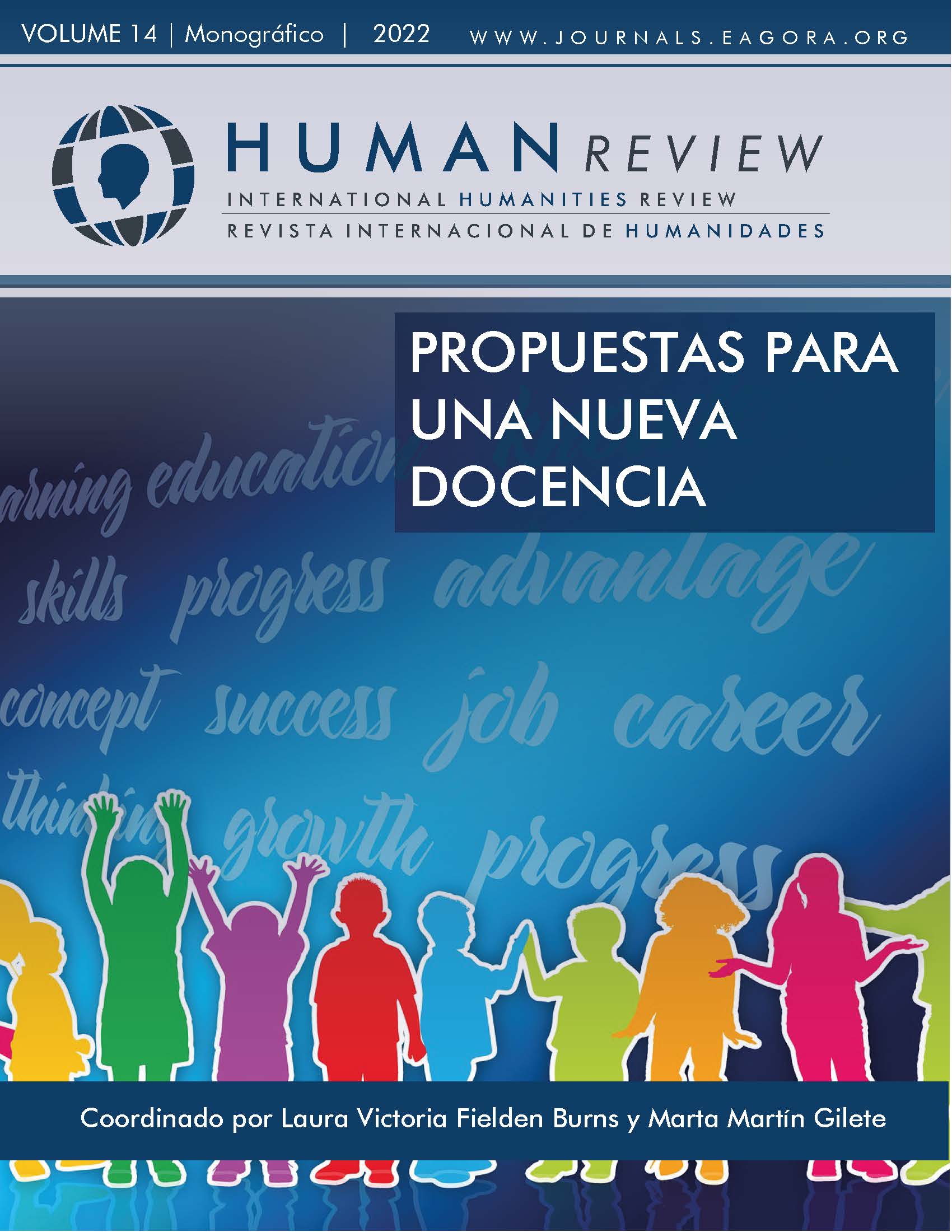Protocol to improve the quality in the formulation of problems in mathematics
A two-dimensional didactic proposal
DOI:
https://doi.org/10.37467/revhuman.v11.4174Keywords:
Reading comprehension, Resolution, Math problems, Linguistics, Students, University, EngineeringAbstract
This paper analyzes the implications of the relationship between reading comprehension and problem solving in mathematics through a detailed analysis of the linguistic formulation of mathematical problems and their resolution in a teaching support manual prepared for this purpose. In this way, different statements of problems in mathematics are detailed to analyze from their verbal structure -according to a growing and integrated complexity- in order to expose their impact on the possibilities of resolution by first-year university students in the Faculty of Engineering from UC Temuco.
References
Adu-Gyamfi, K.; Bossé, M. J., & Chandler, K. (2015). Situating student errors: linguistic-to-algebra translation errors. International Journal for Mathematics. Teaching and Learning, 16(2), 1-29
Ahn, M. Y., & Davis, H. H. (2019). Four domains of students’ sense of belonging to university. Studies in Higher Education, 45(3), 622-634. https://doi.org/10.1080/03075079.2018.1564902
Becerra, W., & Sarmiento, N. (2017). Nuevas Perspectivas para la Enseñanza de la Resolución de Problemas de Cálculo a Estudiantes de Ingeniería. Scientia Et Technica, 22(2), 208-217. https://doi.org/10.22517/23447214.16551
Biggs, J. (2012). Calidad del aprendizaje universitario. 1era Edición. Editorial Narcea.
Catalano, A. (2018). Tecnología, innovación y competencias ocupacionales en la sociedad del conocimiento. Organización Internacional del Trabajo, Buenos Aires, Argentina.
Felmer, P.,Perdomodíaz J. y Quiroz,C. (2019). Problemas Para Activar La Resolución De Problemas En Las Aulas. Chile. Editorial LOM.
Ferreira, A. Salcedo, P., y Del Valle, M. (2014). Estudio de disponibilidad léxica en el ámbito de
las matemáticas. Estudios Filológicos, 54, 69-84. http://dx.doi.org/10.4067/S0071-17132014000200004
González, C., Rivas, M., Schweter, P., Bustos, J. y García, R. (2021). Desempeño de estudiantes universitarios en la asignatura de álgebra desde un enfoque lecto-matemático: un estudio interdisciplinario. Libro de actas del CUICIID ISBN 978-84-09-31464-5.
Jimenez, A. y Riaño, I. (2019). Lengua materna y comunicación en la construcción del pensamiento matemático. Bolema, Rio Claro (SP), v.33, n.63, pps. 248-268 http://dx.doi.org/10.1590/1980-4415v33n63a12
Kahu, E., Ashley, N. y Picton, C. (2022). Exploring the complexity of first-year student belonging in higher education: Familiarity, interpersonal, and academic belonging. Student Success Journal, Vol. 13 (2), pp. 10-20.
Ley General de Educación de Chile (2009). Ley 20.370. Ministerio de Educación de Chile.. http://bcn.cl/2f6yy
McLeod, S. and Maimon, E. (2000). Clearing the Air: WAC Myths and Realities. College English, 62 (5), 573-583. http://dx.doi.org/10.2307/378962
Mestan, K. (2016). Why students drop out of the Bachelor of Arts. Higher Education Research & Development, 35(5), 983-996. https://doi.org/10.1080/07294360.2016.1139548
Moreira-Moreira, L., Cano-Lara, E. y Moreira-Roca, J. (2021). Formación basada en competencias investigativas en los estudiantes de pregrado de latinoamerica. FIPCAEC, ed. 23, Vol. 6, n.1, pp.665-684.
Müller, C. y Mildenberg, T. (2021) Faciliting flexible learning by replacing time with an online learning environment: A systematic review of blended learning in higher education. Educational Research Review, 34. https://doi.org/10.1016/j.edurev.2021.100394
Nairn, K., & Higgins, J. (2007). New Zealand’s neoliberal generation: Tracing discourses of economic (ir) rationality. International Journal of Qualitative Studies in Education, 20(3), 261-281. https://doi.org/10.1080/09518390701281819
Naylor, R. (2017). First year student conceptions of success: What really matters? Student Success, 8(2), 9-20. https://doi.org/10.5204/ssj.v8i2.377
O’Keefe, P. (2013). A sense of belonging: Improving student retention. College Student Journal, 47(4), 605-613.
Pedroza, R. (2006). La interdisciplinariedad en la universidad. Revista Tiempo de Educar, vol. 7, núm. 13, UNAM, Toluca, México.
Pólya, G. (2006). Cómo plantear y resolver problemas. Editorial Trillas. México.
Quintanal. J. y Téllez, J. (2000). Las estrategias lectoras. Concepto y enseñanza. Enseñanza, 17-18.
Quintanal, J. (2001). Tratamiento complementario de la lectura en el aula. Consideración que ha de recibir en otras áreas que no sean de la lengua. Editorial Laboratorio Educativo. 1 Ed., pp. 45–58 Caracas, Venezuela.
Rios-Cabrera, P. y Ruiz-Bolivar, C. (2020). La innovación educativa en América Latina: lineamientos para la formulación de políticas públicas. Innovaciones Educativas, vol.22, n.32, pp.199-212. http://dx.doi.org/10.22458/ie.v22i32.2828.
Rivas, M., González, C., Schwerter, P., Bustos, J. y García, H. (2022). Protocolo de Didáctica Lecto Matemática DILEMA. Editorial UC Temuco. Chile.
Salas-Rueda, R. (2018). Uso del ciclo de Deming para asegurar la calidad en el proceso educativo sobre las Matemáticas. Revista Ciencia UNEMI, Vol. 11, Nº 27, Agosto 2018, pp. 8 - 19
Saucedo, M. Espinosa, M. y Herrera, S. (2019). Método de Pólya aplicado al lenguaje algebráico en primer año de licenciatura. Revista Iberoamericana para la Investigación y el desarrollo Educativo RIDE. Vol 9, número 18.http://www.scielo.org.mx/pdf/ride/v9n18/2007-7467-ride-9-18-512.pdf
Thomas, L. (2012). Building student engagement and belonging in higher education at a time of change. Final report from the What Works? student retention and success programme.
Tinker, S., & Elphinstone, B. (2014). Learning engagement: The importance of meaning, belonging and academic momentum [Conference paper]. 17th International First Year in Higher Education Conference, Darwin, Australia.
Tinto, V. (2009). Taking student retention seriously: Rethinking the first year of university. ALTC FYE Curriculum Design Symposium, Brisbane, Australia.
Downloads
Published
How to Cite
Issue
Section
License
Those authors who publish in this journal accept the following terms:
- Authors will keep the moral right of the work and they will transfer the commercial rights.
- After 1 year from publication, the work shall thereafter be open access online on our website, but will retain copyright.
- In the event that the authors wish to assign an Creative Commons (CC) license, they may request it by writing to publishing@eagora.org









